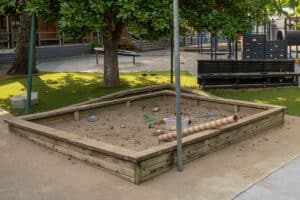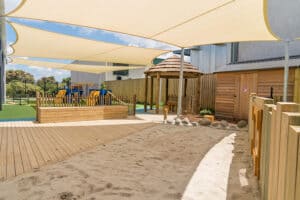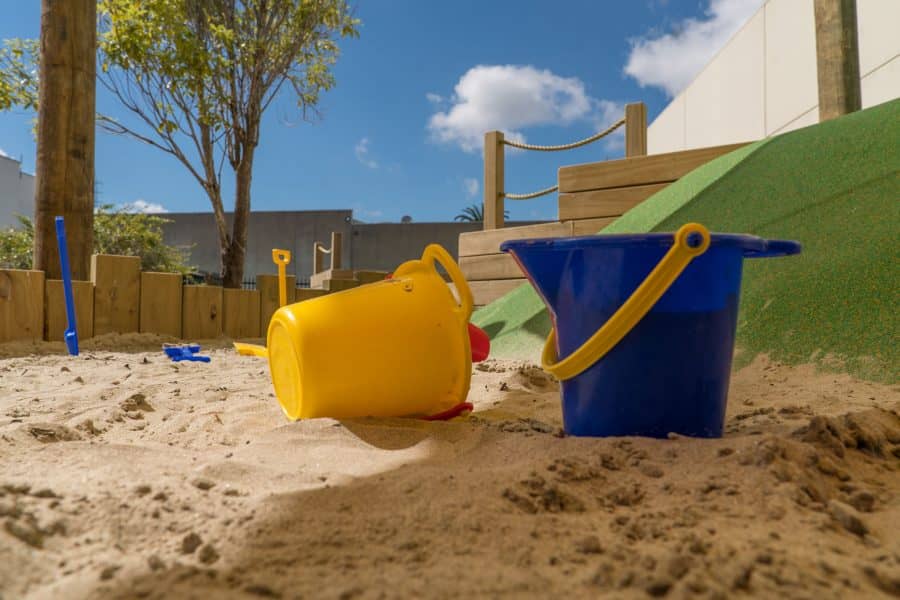Sand is another natural element that adds hours of fun to your playspace. Children are instinctively drawn to it, making the sandpit one of the busiest places in the playground.
The sandpit is also one of the best places to learn with many experiences on offer. For example, with its texture and changing consistency when wet or dry, sand has a great sensory dimension. Sand is also great for social learning. Children need no skill to play with it, so they can easily do so alongside one another other, which is the first step towards playing together. Sandpits also provide flexible spaces that can be set up in several different ways to capture and develop future interests. For example, one day the sandpit can be a construction site with trucks and rocks, another day it can be set up as an outdoor kitchen with cakemaking and mud pies.
Download the full guide: The Elements of Play
Creo sand play options
 Above Ground Sandpit
Above Ground Sandpit
Above ground sandpits allow for the possibility of seated edges, playable edges or edges used to help separate and contain sand. The down sides are that younger users cannot crawl straight in, sand is harder to sweep back up into the sandpit, and the edge may cause tripping hazards or decrease visual supervision across the site.
 Built-in, Ground-level Sandpit
Built-in, Ground-level Sandpit
This option is great for flow, especially in sites where there are other associated sand play options such as outdoor kitchens. You don’t have children climbing over the edge of the sandpit with the related risks. It looks more natural and can often have planting around its edges. It also provides easier maintenance from daily sweeping of sand straight in, or even tipping sand in when topping up.
 Built-in Sandpit with Incorporated Water Play
Built-in Sandpit with Incorporated Water Play
This option offers all the benefits of a built-in, ground-level sandpit, as well as the added advantage of water to create wet sand creations.
Considerations when selecting sand play options
The sandpit is often the main feature on a site. Size, shape and location are extremally important to getting it right and may dictate which option you choose. Edges need to be carefully considered to reduce sand travel as much as possible.
Activation
Sandpits are always popular and are a great item to activate an unused area.
Location
Sandpits need to be located so that children don’t run through other activities to get to them. Also, if they are too close to buildings, sand travels inside very easily.
Age of user
This should be a factor when determining a raised edge or sunken sandpit as sides can become a tripping hazard for younger children.




 Flexible Set Up Area with Moveable Equipment
Flexible Set Up Area with Moveable Equipment
 Bike Tracks
Bike Tracks
 Space
Space